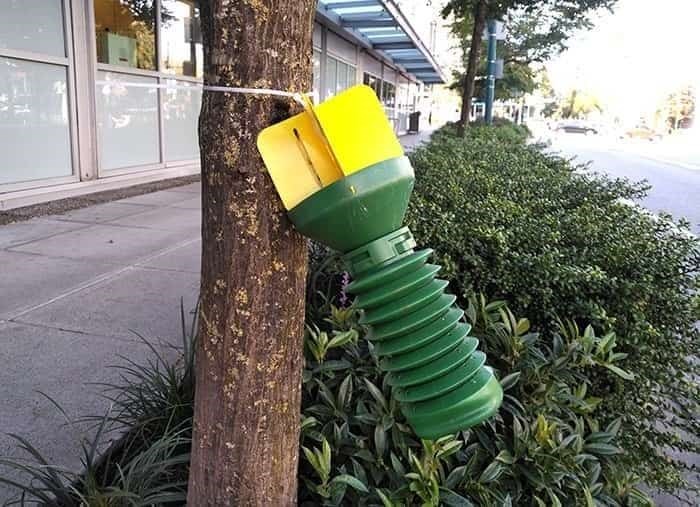They almost look like giant plastic screws or Nerf footballs hanging off trees, but these strange objects serve an important purpose in the province.
In fact, these peculiar gadgets are actually insect catchers. They are used as a tool for officials to conduct routine surveillance on an invasive species to BC, the Japanese beetle.
The plant pest was first introduced to Eastern North America from Japan in 1916 and can cause major damage to plants and gardens, as well as agricultural crops.
As a result, the Canadian Food Inspection Agency has set thousands of traps in order to monitor the population, which is focused around False Creek; you may see signs in that area mentioning them.
Back in June of 2018, the City of Vancouver began treating parks in order to combat the rise of the species after it appeared the beetles were spreading. While the creature has been found in the False Creek area, it's spread to show up around the city. Small numbers have shown up in other places, like Burnaby, UBC, Delta and Port Coquitlam.
In 2021 the number of traps was increased to 2,524 traps across the province, with the vast majority around Vancouver, focusing on False Creek and David Lam Park. This year it's jumping to 5,700 traps.

In addition, people are asked to keep the dead beetles and notify the CFIA about the findings.
Japanese beetle larvae feed on the roots of lawns and other plants, which is how they cause damage. What's more, the species' adults are heavy feeders. They attack the flowers, foliage, and fruit of more than 250 plant species, including roses, blueberries, and grapevines.
The damage they cause is significant compared to other pests like European chafer beetles.
With files from Jessica Kerr and Brendan Kergin




